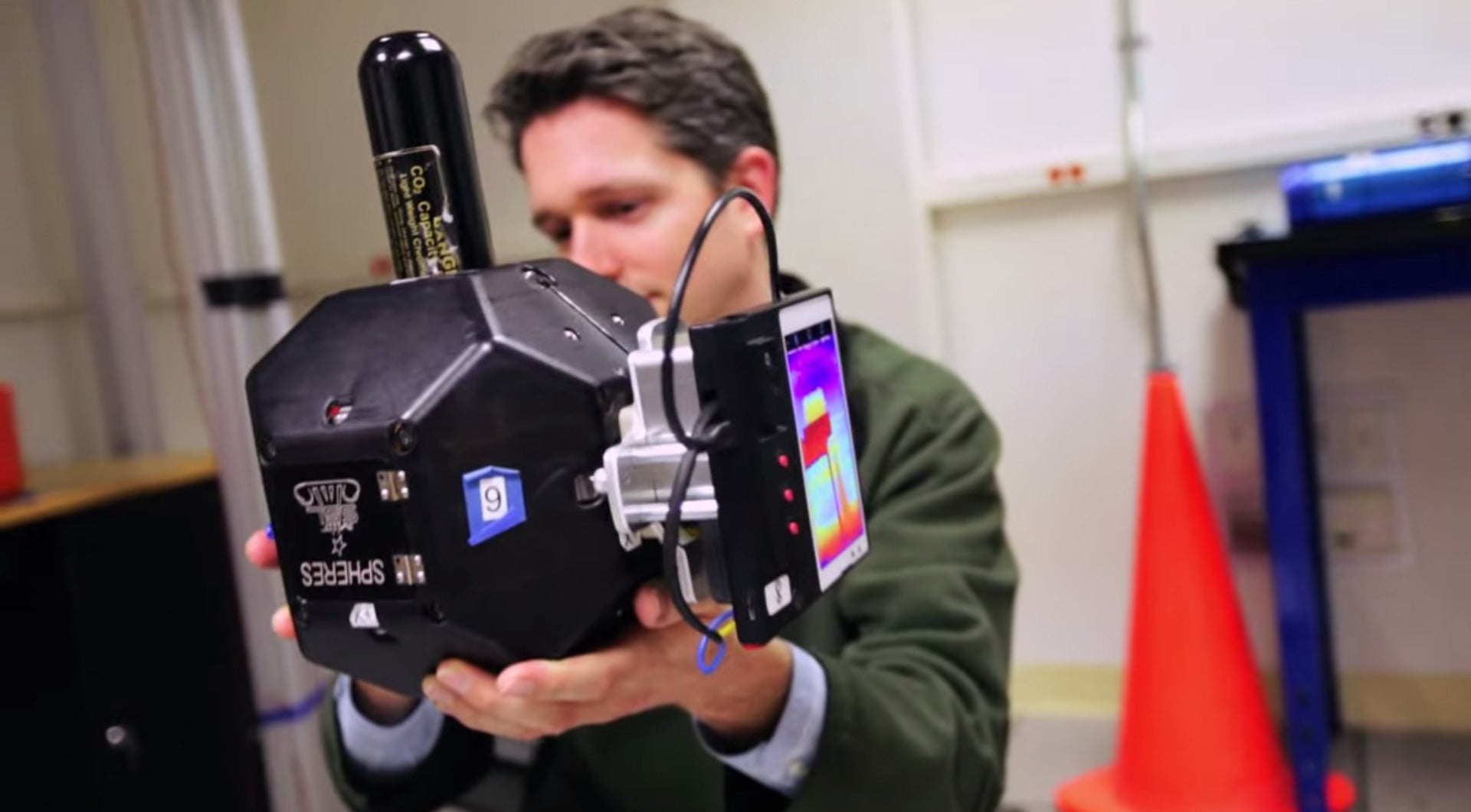Google smartphones will provide the brains for Nasa's prototype robot assistants
The bowling-ball sized robots navigate around zero gravity environments using small blasts of CO2 - Google's 3D-sensing technology will let them 'see'

Nasa and Google will collaborate on building a series of sphere-shaped robots that navigate in zero gravity using small CO2 jets and that could one day take over astronauts’ daily chores.
The Synchronized Position Hold, Engage, Reorient, Experimental Satellites (or Spheres for short) are about the size of bowling balls and were first sent to the International Space Station (ISS) by Nasa in 2006.
Back then the bots were capable of precise movements and little else, but Nasa engineers are looking to Google to equip the Spheres with some more advanced smarts.
Google’s contribution comes in the form of Project Tango – a research project aimed at slimming down sophisticated 3D-sensing capabilities to fit into mobile devices. A number of Project Tango smartphones will be sent to the ISS on 11 July where they will become the brains and eyes of several Spheres.
This combination of Project Tango and Spheres technology was first tested in April this year, where prototype devices were sent on zero G flights in the US.
The Project Tango devices use the same basic technology found in Microsoft’s Kinect sensor. Infrared sensors and motion-tracking cameras detect depth, allowing onboard computers to create maps of the devices’ surroundings. These will let the Spheres bots navigate around the ISS, propelling themselves around the space station’s modules at a top speed of one inch per second (so no Wall-E style acrobatics just yet).
"This type of capability is exactly what we need for a robot that's going to do tasks anywhere inside the space station," Smart SPHERES project manager Chris Provencher told Reuters. "It has to have a very robust navigation system.”
Nasa envisions that the Spheres robots (the design of which was inspired by the training spheres or ‘remotes’ from the Star Wars films) could one day function as assistants in space. The bots could fly around in formation or click together inside and outside the craft, leaving astronauts to carry out more delicate and demanding work.
Subscribe to Independent Premium to bookmark this article
Want to bookmark your favourite articles and stories to read or reference later? Start your Independent Premium subscription today.

Join our commenting forum
Join thought-provoking conversations, follow other Independent readers and see their replies